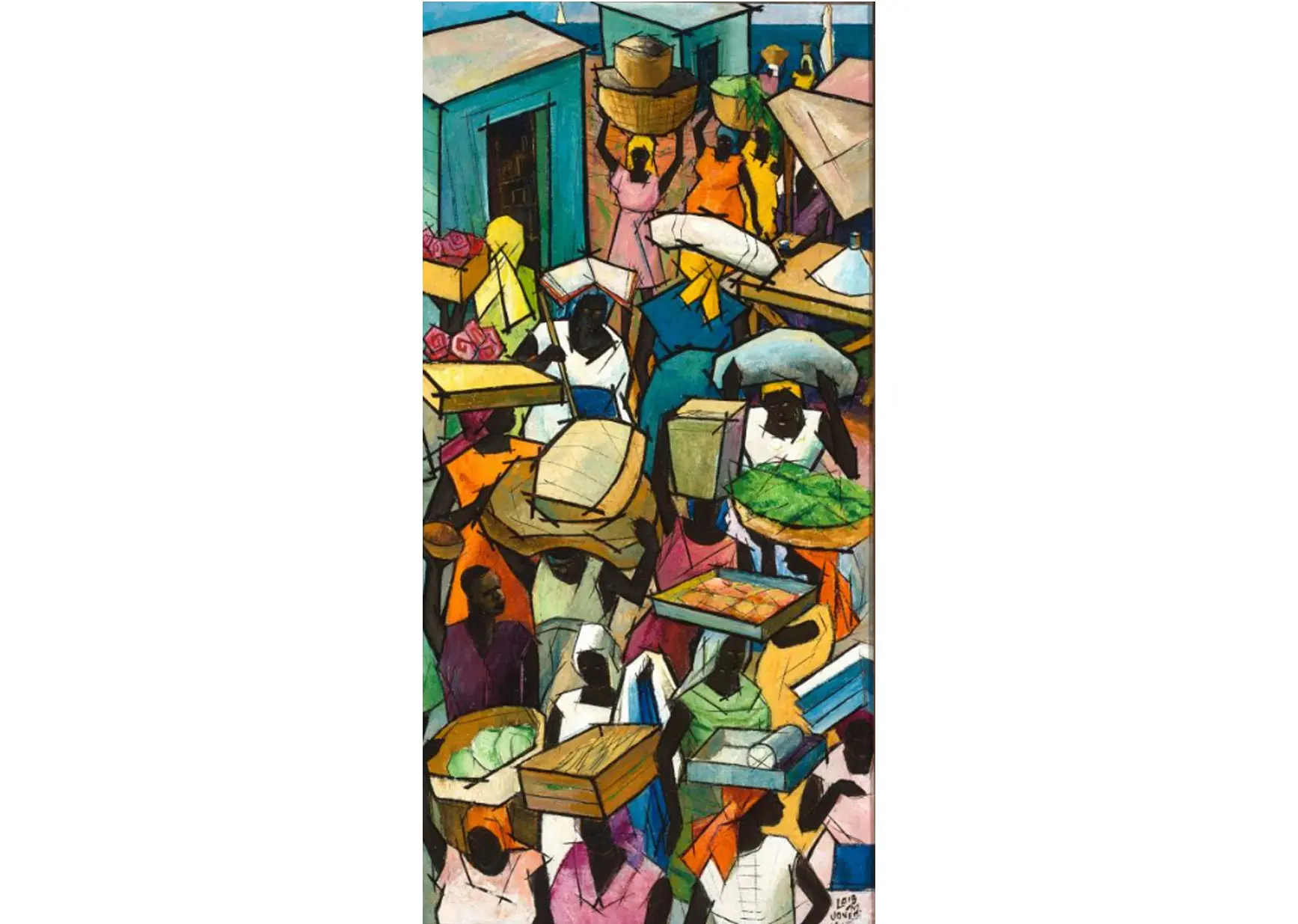Visiting artwork in collections storage is crucial to curatorial work and one of my favorite aspects of exhibition development. I was unfamiliar with the extent of the Delaware Art Museum’s contemporary collection, so when the Museum invited me to guest curate an expanded version of There Is a Woman in Every Color: Black Women in Art, I wondered what might align with the exhibition’s narrative. Several visits to Del Art’s collections storage helped me discover new and unexpected stories to feature in the upcoming show.
Heather Campbell Coyle, Curator of American Art, facilitated my search and walked me through storage to see potential choices. Walking through collections storage allows art to resonate differently than simply reviewing reproduction images. It is helpful to browse the collection’s database to find potential pieces for the exhibition. As a guest curator, it helped immensely to see artworks in person to supplement browsing the Museum’s online collections search. The collections storage visits gave me a better sense of color, composition, framing, and size—essential for determining gallery layout, potential wall colors, formal analyses, and interpretation.
Viewing objects up close also helps curators appreciate artists’ care and attention to creating their work. Reviewing a list of potential artworks, I initially brushed past Eldzier Cortor’s Environment No. V (1969). Paintings and prints by artists like Lois Mailou Jones, Faith Ringgold, and Emma Amos captured my attention first due to their vibrant and contrasting colors that seemed to jump off the page. However, my assessment of Environment No. V changed when I viewed the work in person. What I initially interpreted as subdued colors were rich and nuanced. Looking closely allowed me to appreciate Cortor’s use of several printmaking techniques to develop shading and texture that resembled realistic illuminated brown skin. I especially enjoyed the bronze-colored halo behind the rightmost figure that recalled halos signifying saints in Byzantine art. Spending time up close with Cortor’s print revealed new details not visible from the checklist’s images.
The selected artworks from the Delaware Art Museum command attention and require ample wall space. Seeing the size of the contemporary pieces required me to rethink how the temporary exhibition would incorporate these new works and fit into the gallery. Viewing selections by Hank Willis Thomas and Lorna Simpson made me consider how they would pair next to smaller pieces in the traveling exhibition. In-person trips to the Delaware Art Museum’s storage prompted me to reconsider the exhibition’s layout and integrate Del Art’s holdings with those from the Bowdoin College Museum of Art. This integration lends to thematic connections in both permanent collections, stressing the importance of representing Black women’s histories in all museum institutions.
I appreciate visiting the Delaware Art Museum’s collection and determining how these remarkable works would fit alongside the existing traveling exhibition. I look forward to presenting Eldzier Cortor’s Environment No. V and the temporary exhibition to visitors when the show opens to the public on March 16, 2024. I hope you can come and see it in person.
Elizabeth S. Humphrey
Doctoral Candidate, Art History, University of Delaware
Guest Curator
Caption: Parade de Paysans (Peasants on Parade), 1961. Loïs Mailou Jones (1905–1998). Oil on canvas, 39 ¼ x 19 inches. Delaware Art Museum, Acquisition Fund, 2018.

